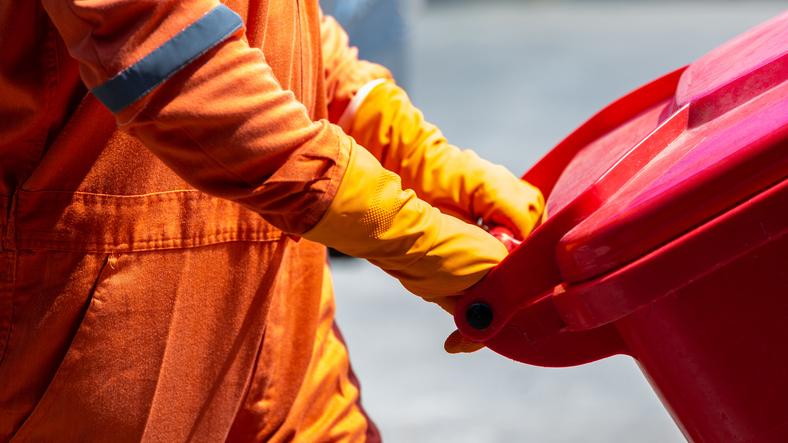Where will Australia store its nuclear waste?
Posted By Raelene Lockhorst on September 12, 2023 @ 14:30

Since the announcement of the AUKUS partnership to equip Australia with conventionally armed, nuclear-powered submarines (SSNs), there’s been an intense, and sometimes confusing, debate on how nuclear waste will be managed. Are we debating the development of a national nuclear waste facility or an AUKUS nuclear waste facility?
The government has committed to managing the radioactive waste generated by the submarines in accordance with its nuclear non-proliferation and other international obligations. But it has not mapped out how it will do that.
Defence has acknowledged that storage for this waste won’t be required until the mid-2050s when the Royal Australian Navy’s first Virginia-class submarine is expected to be decommissioned. That gives government about 30 years to deliver the supporting infrastructure.
The site-selection process for a national radioactive waste-management facility [1] has been underway for more than 10 years since legislation passed in 2012. With the recent Federal Court decision to set aside the preferred location near the town of Kimba in South Australia, the process is set to start again. That ruling was focused on the decision-making and consultation process and the potential safety risks involved in double-handling radioactive waste between temporary and permanent storage facilities.
However, as outlined in The Strategist [2] last month, establishing nuclear infrastructure, even on Defence land, demands robust stakeholder consultation, including with First Nations people, and extensive site due diligence, design development and approvals (planning, environmental and regulatory).
Australia’s only facility producing and storing radioactive material is managed by the Australian Nuclear Science and Technology Organisation at Lucas Heights. That facility is nearing capacity. Nuclear waste from hospitals, universities, research labs, mining and defence sites is stored at more than 100 sites across the nation.
Australia doesn’t have a clear national approach to the temporary storage and permanent disposal of this waste [3], and a permanent, sustainable, whole-of-government solution is urgently needed.
Low-level and intermediate-level waste ranges from medical equipment to clothing contaminated by exposure to radioactivity. High-level waste is a byproduct of nuclear reactors and is expected to include the decommissioned radioactive fuel rods from the SSNs. In addition, Australia has had radioactive-waste-swap arrangements with the British and French that will increase pressure on Australia’s long-term nuclear waste-disposal solutions.
Radioactivity is emitted by nuclear waste until it decays into more stable forms, which can take hundreds of thousands of years. The US Environmental Protection Agency warns that high-level waste will remain dangerous for at least 10,000 years.
With proper maintenance, the life span of a storage facility is typically about 50 years. The Lucas Heights facility was designed to store intermediate-level waste for up to 100 years. It was constructed in 1989 and has 66 years of life remaining.
Considering Australia’s increased low- and intermediate-level waste requirements, and the new high-level waste requirements arising from AUKUS, there seems to be an overall deficit of about 9,900-plus years in nuclear waste storage.
That makes this an atypical infrastructure investment decision for government. How can we guarantee that whatever construction is chosen will remain sound in hundreds, let alone thousands, of years? Decisions made today will impact future generations.
Australia can look to Finland, which is developing long-term repositories capable of storing up to 6,500 tonnes of high-level nuclear waste. The Finnish facility [4] has been designed to store nuclear waste for at least 100,000 years, encasing spent nuclear fuel in copper canisters to be placed in tunnels drilled into bedrock 430 metres below ground and 420 metres below sea level.
Unlike our European counterparts, Australia has the advantage of abundant land for such a facility. It has been suggested [5] that a site in Defence’s 120,000-square-metre Woomera Range Complex in the northwest of South Australia may ultimately be chosen for Australia’s nuclear waste. As with any other location, that would require extensive due diligence and consultation.
To prevent a recurrence of the errors made during the Kimba site-selection process, the government should take a page from Finland’s playbook, which addressed the concerns of affected populations and stakeholders by being transparent and engaging in active consultation from the outset.
A top-down approach to site selection and construction of nuclear waste infrastructure won’t suffice. While the government has stated its intent [1] to ‘consult widely and bring stakeholders, including First Nations people along with us’, it hasn’t shared the proposed roadmap to implementation. Will nuclear waste be stored in a central repository or will AUKUS nuclear waste be managed separately? What are the basic principles and approaches to consulting with the public, including landowners and First Nations people? What are the governance arrangements, given that the problem cuts across federal and state governments and international regulators and agencies?
Finally, as with all major infrastructure projects, future proofing will be crucial. In undertaking the site selection and design development, it’s important to consider that a future government may decide to adopt nuclear energy as part of a strategy to deal with climate change, or could change its position on nuclear weapons, as the Menzies government [6] did in 1958 when it asked Britain to help Australia acquire tactical nuclear weapons. That push was abandoned with Australia’s ratification of the Treaty on the Non-Proliferation of Nuclear Weapons in 1973.
Article printed from The Strategist: https://aspistrategist.ru
URL to article: /where-will-australia-store-its-nuclear-waste/
URLs in this post:
[1] national radioactive waste-management facility: https://www.minister.industry.gov.au/ministers/king/media-releases/statement-national-radioactive-waste-management-facility
[2] The Strategist: /planning-defence-projects-for-a-new-submarine-era/
[3] waste: https://global.oup.com/academic/product/the-future-of-nuclear-waste-9780190888138?cc=au&lang=en&
[4] Finnish facility: https://www.science.org/content/article/finland-built-tomb-store-nuclear-waste-can-it-survive-100000-years
[5] suggested: https://www.afr.com/politics/federal/woomera-looms-as-national-nuclear-waste-dump-site-20230810-p5dvl
[6] Menzies government: https://www.nonproliferation.org/wp-content/uploads/npr/walsh51.pdf
Click here to print.